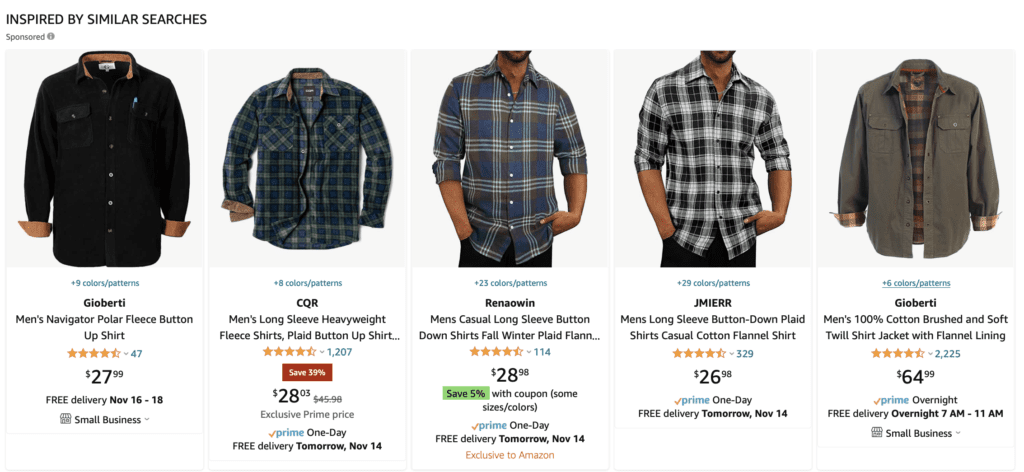By Tim Colucci and Morgan Reilly
It’s a challenging time to be a merchant selling products on Amazon. In October, Amazon’s vaunted Prime Day II sale underperformed according to analysts’ analysis. And then Amazon forecast its Q4 retail sales to be $140 billion to $148 billion in the fourth quarter, far short of analysts’ average estimate of $156 billion. Meanwhile, Adobe Inc. forecast that US e-commerce sales in November and December will rise just 2.5% from the prior year.
All of this is because consumers are more price conscious amid inflation and fears of a pending recession, so they will likely spend less.
Independent sellers on Amazon’s website, who account for a majority of unit sales, are bracing for a challenging holiday season in the run-up to Cyber Week. Many of them advertise their products on Amazon via Amazon Ads. How should they adapt their approach if at all?
Here are some tips:
1 Don’t Let Prime Day Results Spook You
Klover, a company that analyzes real-time commerce and financial data, found that households spent around 40 percent less during the October event compared with the July Prime Day. But merchants were constrained by Amazon’s ground rules for selling on Prime Day II, which prohibited vendors from featuring top discounts on both October Prime Day and Cyber Week. So, many merchants likely were hesitant to feature their top discounts/promotions because they needed to save them for Cyber Week. Also, many retailers might not have been prepared to have inventory ready for two Prime Days (July and October) and Cyber Week — and in those cases, they are likely holding out for Cyber Week.
2 Focus on Value, Not Price
As a partner to advertisers this holiday season, our own experience indicates that the lowest cost item isn’t necessarily the most popular. So far we’re seeing traditionally popular sellers are doing well. Consumers are willing to pay for what they really want. They’re willing to trade down for a lower-cost alternative, but that doesn’t mean they’re going for the cheapest items on the menu. Beware inventory dumping, which burned many businesses on Prime Day. During the inflationary times we’re living in, price-conscious shoppers are less likely to buy something extra just because it’s on sale.
3 Consider Sponsored Brands and Sponsored Display in Addition to Sponsored Products
For many merchants, Amazon’s Sponsored Products ad unit is the bread-and-butter of their ad spend. Sponsored products are used to promote a single product and take the consumer directly to the product page. Additional creative such as images and text are not needed, making sponsored products the simplest ad to set up. Merchants use keyword targeting to match products to a consumer’s search and show ads on the search results page or product detail page.
Sponsored Brands allow for multiple products or titles to be promoted together using a custom headline and logo. Consumers are taken to a product page if they click on a product, or to a designated landing page if they click on the image or ad text. Sponsored Brands are good for driving awareness, in addition to sales. For example, advertisers can pair new or seasonal items with a related top seller in an ad to increase visibility in other product offerings. Or if a seller has multiple versions of the same product, using Sponsored Brand ads showcases the variety available within a single ad.
Sponsored Display, on the other hand, makes it possible to engage with shoppers on and off Amazon with self-service display ads. Advertisers can engage audiences browsing specific detail pages, on the Amazon home page, on Twitch (owned by Amazon), and across third-party apps and websites. Amazon says that on average companies that use Sponsored Display see up to 82 percent of their sales driven by new-to-brand customers.
So, why do Sponsored Brands and Sponsored Display matter? Because the 2022 holiday season is more competitive. As Amazon noted in its earnings forecast, shoppers are spending less. They’re choosier. So, advertisers have to work harder at the awareness and consideration phases, which is where Sponsored Brands (for consideration) and Sponsored Display (for awareness) can be especially useful by showcasing more of a product’s features on and off Amazon.
4 Know Your Cyber Week Strategy
Today merchants everywhere (whether on Amazon or not) need to manage their holiday advertising spend against an increasingly complex set of choices: Black Friday, Cyber Monday, and now Cyber Week (Thanksgiving Day, Black Friday, Small Business Saturday, Super Sunday, and Cyber Monday).
You do want to fund your advertising for all of Cyber Week, but some days are more appealing than others depending on what you sell. Cyber Monday remains huge, especially the peak shopping evening hours. Cyber Monday will likely loom very large in 2022 as shoppers hold out for the best possible deal.
Each day a retailer gets closer to Christmas, sales will inevitably taper off, off, but retailers should keep placeholder budget in place up until the last day free shipping is possible.
Contact True Interactive
True Interactive has deep experience helping clients plan and implement holiday shopping campaigns online, and this includes the use of Amazon Ads. We can help you, too. We understand how to create nimble search campaigns and multi-channel ad outreach to target consumers with the right message at the right time. Contact us to learn more.


